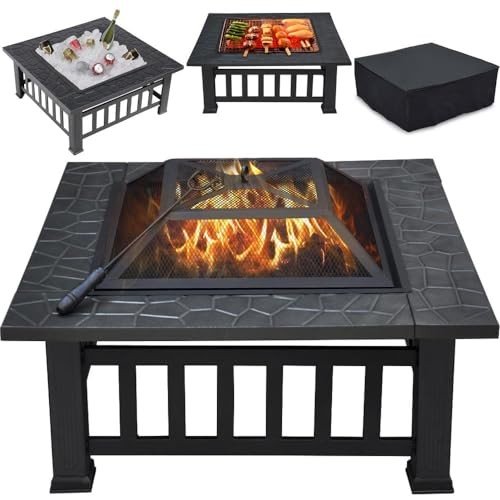Fireplaces in the UK: A Comprehensive Guide
Fireplaces have actually long been an important part of British homes, using both aesthetic appeal and practical heat. As the weather turns chilly, the appeal of a cozy fire beckons, transforming any living area into a sanctuary. In this article, we will explore the different types of fireplaces offered in the UK, considerations for setup, maintenance ideas, and responses to regularly asked concerns about fireplaces.
Kinds of Fireplaces
When picking a fireplace for a UK home, numerous alternatives are readily available, each with distinct features and benefits. The following table summarizes the primary types of fireplaces popular in the UK:
| Fireplace Type | Description | Pros | Cons |
|---|---|---|---|
| Open Hearth | Traditional fireplaces that burn wood or coal, supplying a rustic feel. | Authentic atmosphere; excellent heat circulation | Less energy-efficient; requires chimney maintenance |
| Gas Fireplaces | Use gas or lp; can be direct vent or ventless. | Instantaneous heat; simple to run; cleaner burning | Initial installation expense; may require gas line |
| Electric Fireplaces | Imitate a flame utilizing LED lights and offer heat through electrical power. | Safe; easy to install; no flue required | Less genuine; higher operating expense |
| Wood-burning Stoves | Closed-system fireplaces that burn logs, providing high efficiency. | High heat output; eco-friendly when using sustainable wood | Limited visual compared to open hearth |
| Bioethanol Fireplaces | Eco-friendly alternative that burns bioethanol, creating genuine flames. | No chimney needed; versatile design alternatives | Can be pricey to operate; minimal heat output |
Pros and Cons of Each Type
Open Hearth
- Pros:
- Provides character to any living area.
- Efficient heat distribution due to open flames.
- Cons:
- Less energy-efficient and more smoke than modern choices.
- Requires regular cleansing and maintenance of the chimney.
Gas Fireplaces
- Pros:
- Easy to control and run with the flick of a switch.
- Cleaner alternative with less soot accumulation.
- Cons:
- Requires a gas supply and setup expenses can be high.
- Might not provide the very same atmosphere as a traditional fire.
Electric Fireplaces
- Pros:
- Simple setup without any chimney or flue needed.
- Comes in numerous designs, resembling traditional choices.
- Cons:
- Lacks the realism of real flames and can become expensive with constant use.
Wood-burning Stoves
- Pros:
- Highly effective and produces significant heat.
- Renewable resource when using properly sourced wood.
- Cons:
- Requires additional space for log storage and regular maintenance.
Bioethanol Fireplaces
- Pros:
- Flexible positioning due to no requirement for traditional venting.
- Clean-burning and minimal effect on indoor air quality.
- Cons:
- Can be less economical for continual usage compared to gas or wood.
- Heat output is less reliable for bigger spaces.
Setup Considerations
When setting up a fireplace in a UK home, a number of elements need to be taken into account:
- Building Regulations: Ensure compliance with regional building regulations and security guidelines.
- Chimney and Flue: Determine the need for a chimney or flue system based on the kind of fireplace chosen.
- Ventilation: Proper ventilation is crucial for security, specifically with gas, wood, and bioethanol alternatives.
- Area: Consider the very best location for the fireplace to optimize heat distribution and visual appeal.
- Expert Help: Engaging an expert installer can ensure a safe and precise setup customized to the specific kind of fireplace.
Maintenance Tips
Regular maintenance of a fireplace is important for both security and effectiveness. Follow these standards to keep your fireplace in peak condition:
- Chimney Sweeping: Have your chimney professionally swept a minimum of when a year to avoid clogs and lower fire danger.
- Examine for Damage: Regularly look for leaks, fractures, or damage, specifically in gas and wood-burning fireplaces.
- Tidy the Surroundings: Ensure the area around the fireplace is totally free from dust and flammable products.
- Inspect Carbon Monoxide Detectors: Test detectors routinely, especially in homes with gas-burning appliances.
- Shop Wood Properly: If using a wood-burning stove, shop wood in a dry location to minimize wetness material.
Regularly Asked Questions
What is the best type of fireplace for a small space?
For small areas, electric fireplaces or bioethanol designs are frequently suggested due to their smaller size, safety features, and aesthetics.
Are electric fireplaces more affordable to run than gas?
Electric fireplaces typically have a lower in advance expense, but depending on electricity rates, they can be more expensive to run long term compared to gas.
Do wood-burning stoves require a great deal of maintenance?
While they do need some upkeep, such as cleansing and regular chimney sweeper, many property owners find that modern wood-burning stoves are effective and reasonably low maintenance compared to traditional open hearths.
Can I set up a gas fireplace myself?
While some homeowners might attempt DIY installation, it is extremely suggested to hire an expert for gas fireplace installations due to safety issues and regulatory compliance.
How can I maximize the heat output of my fireplace?
To optimize heat output from any fireplace, consider the following:
- Keep windows and doors closed throughout use.
- Use heat-efficient logs or fuels.
- Make sure appropriate airflow around the fire.
- Use fans or blowers that can flow warm air throughout the room.
Fireplaces stay a cherished component within UK homes, providing warmth, beauty, and a welcoming environment. Given the range of options and their distinct features, house owners can pick the ideal fireplace to match their home while guaranteeing security and effectiveness. With Wood Burning Fireplaces UK and a clear understanding of the setup requirements, anyone can delight in the charm and comfort of a fireplace for several years to come.

